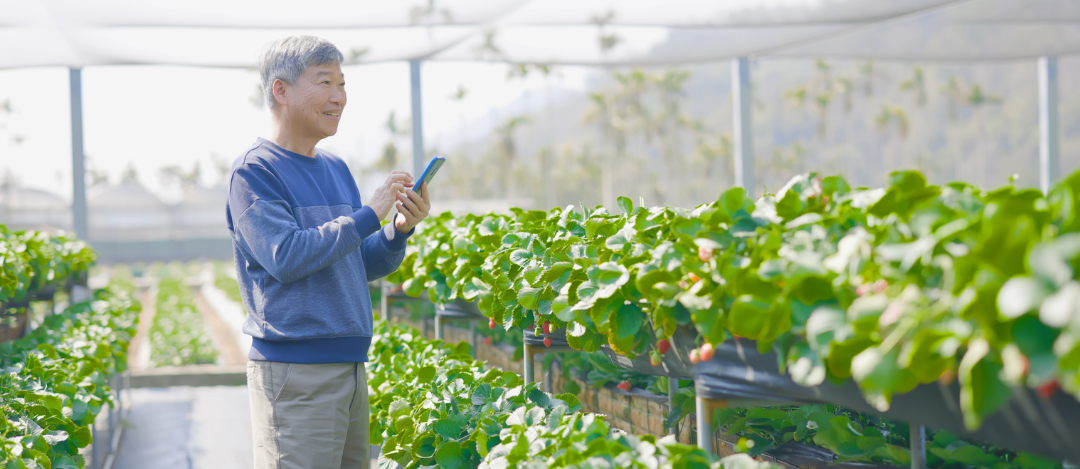
To help you on your growing journey, we’ve put together a list of common crop fails and how to prevent them. These issues may be ones you’ve already experienced or just things to watch out for, but either way our tips will deepen your knowledge and understanding of growing, the setbacks you may experience and how to work through them!
1. Overwatering:
Different types of crops have different water needs, but all are at risk of overwatering. For instance, microgreens and baby greens have delicate roots and can easily rot if overwatered, therefore their growing medium needs to be kept slightly moist but not waterlogged. In order to ensure you’re giving your crops the correct amount of moisture, you can squeeze a handful of the medium gently – it should hold its shape but not release excessive water.
2. Poor Drainage:
Ensure proper drainage in your growing trays to allow excess water to filter out. This will help prevent root issues and overwatering. If you can see water accumulating at the bottom of your grow tray, that’s a sign that you need to improve your drainage.
3. Wrong Growth Medium:
You need to use a growing medium, or substrate, which is suitable for both the crop you are growing and your set up. Different plants have different preferences for drainage, aeration, moisture retention, and nutrient availability. The growth stage of your crop is also an important factor for substrate choice. Solid substrates are more suitable for sprouts and microgreens with shallow roots, whereas loose substrates work better for taller, more mature plants which require a deeper growing medium.
4. Incorrect Seed Density:
Avoid overcrowding by sowing seeds too densely. Proper spacing allows adequate airflow and reduces the risk of mould or disease.Proper seed density ensures that seeds are spaced appropriately, allowing each plant to access adequate nutrients, water, and sunlight. It prevents over competition for resources, promoting healthier growth. The ideal seed density varies from crop to crop, so you will have to do some research based on what you want to grow.
5. Inadequate Light:
Provide sufficient light, preferably a full spectrum grow light, to prevent weak and leggy growth. A lack of light can lead to elongated stems. Most crops need 12-16 hours of light per day, but dark periods are also important as continuous light exposure can stress the plants. Light also needs to be evenly distributed across the whole growing area and be a suitable distance above the crops.
6. Poor Air Circulation:
Stagnant air can encourage mould growth and allow condensation and uneven temperature. You can use fans to promote air movement, and humidity controls to reduce humidity around the plants.
7. Improper Temperature:
Temperature is very important for promoting plant growth, photosynthesis and root health, however different crops have different optimal temperatures. Because of this, it’s important to have a growing environment in which you can properly monitor temperature, as well as both heating and cooling systems as extreme temperatures can stress plants. The ideal temperature for growth varies greatly between different plants. Most leafy greens and herbs require daytime temperatures of 15-24 degrees celsius and nighttime temperatures of 10-18 degrees, whereas most microgreens require daytime temperatures of 16-30 degrees and nighttime temperature of 12-23 degrees.
8. Seed Depth:
Seeds need to be planted at the correct depth in order to ensure optimal, uniform growth. If seeds are planted too deep it can cause stress on the emerging plant, whereas if they are planted too shallow it can make it difficult for the plant to take root and obtain the necessary water and nutrients for the growing medium. The recommended seed density changes from crop to crop, however as a general rule the smaller the seed and plant, the shallower you plant it, For instance, microgreens require very shallow planting and can even be grown on top of the growing medium, as is the case with solid substrates.
9. Inadequate Fertilisation:
All crops require nutrients, however different crops require varying levels of specific nutrients. It’s important to use a balanced and diluted fertiliser to provide essential nutrients. You also need to avoid over-fertilising, which can lead to nutrient imbalances or salt buildup. In order to maintain proper fertilisation, its important to regularly observe, monitor, and adjust your fertilisation strategy based on plant response.
10. Using Contaminated Equipment:
Clean and sanitise trays, growing medium, and tools before each planting to prevent disease and pests.
11. Harvesting too Early or Late:
Harvesting crops at the right time is crucial for ensuring the best quality, flavour, nutritional value, and overall success of your cultivation efforts. Harvesting too early results in minimal growth, while harvesting too late can lead to bitterness. Different types of crops need to be harvested at different points. For instance, microgreens should be harvested when they have developed their first true leaves, usually 7-21 days after sowing and baby greens should be harvested just before or shortly after the first true leaves develop, usually about 2-4 weeks after sowing.
12. Improper Storage:
Storing crops properly after harvest is essential to maintain their freshness, flavour, and nutritional value. It’s important to note that different crops have different storage lifespans. Regularly check stored crops for signs of spoilage or deterioration and use them before they go bad. As a general rule, harvested crops should be stored in a cool, airtight environment.